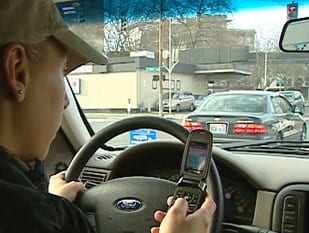Mobile devices get a bad rap when used behind the wheel, and some worry that they can even cause cancer, but there are a certain mobile applications that can enhance safety for field service workers. Mobile Enterprise looked closely at two of those solutions, one that prevents accidents from happening and another to save workers during critical situations.
ZoomSafer — Saving Drivers From Themselves
 With a mobile device in hand and time to kill between jobs, it’s tempting for field service workers to multitask in an all-too-dangerous way: checking email, texting or making calls with their phones. Now there’s a way to counteract that temptation called ZoomSafer, which automatically shuts off a driver’s BlackBerry smartphone once the vehicle they’re driving reaches 15 mph.
With a mobile device in hand and time to kill between jobs, it’s tempting for field service workers to multitask in an all-too-dangerous way: checking email, texting or making calls with their phones. Now there’s a way to counteract that temptation called ZoomSafer, which automatically shuts off a driver’s BlackBerry smartphone once the vehicle they’re driving reaches 15 mph.
ZoomSafer acts as a control for drivers by mining data from vehicles’ telematics systems and wireless carrier billing records. A beta version for Android is available, and with 33 states and Washington D.C. banning texting and driving and eight states banning handheld cellphone use while driving altogether, many companies will be looking toward tools like these to keep drivers from getting caught doing something that could cause them to lose their license — or their lives.
Sonim Technologies XP3 Sentinel — Part Phone, Part Distress Beacon
Remember those commercials where the elderly woman presses a button on a device worn around her neck and says, “I’ve fallen, and I can’t get up”? While that famous line became sort of a catchphrase for a while due to the unintentional comedy it provided, the service that device provided still holds importance, especially for older or disabled people trapped in a bad situation without help nearby. Sonim’s new XP3 Sentinel rugged phone was created for similar situations involving workers in the field.
First, the phone — also known as the “Lone Worker” solution — has an extraordinarily long battery life: 24 hours of talk time and 800 hours of standby time, as well as 26 hours of GPS tracking time, with tracking signals transmitted every 5 minutes. But the real key to this phone is a color-coded 3-button system:
- Green: Pressing this button tells headquarters “I’m still okay.”
- Amber: This is like saying, “I have a security situation,” meaning something that isn’t life-threatening but rather something suspicious could be cause for alarm.
- Red: This means “man down.” If a worker presses this button, there’s an emergency and help is needed immediately.
The phone also has an accelerometer that detects falls or sudden drops. If something like that happens and the phone doesn’t move for two minutes, the phone sends GPS coordinates to headquarters. Since many field service techs find themselves in situations that aren’t always the safest, it’s possible this new phone could be a real lifesaver.


Share this: